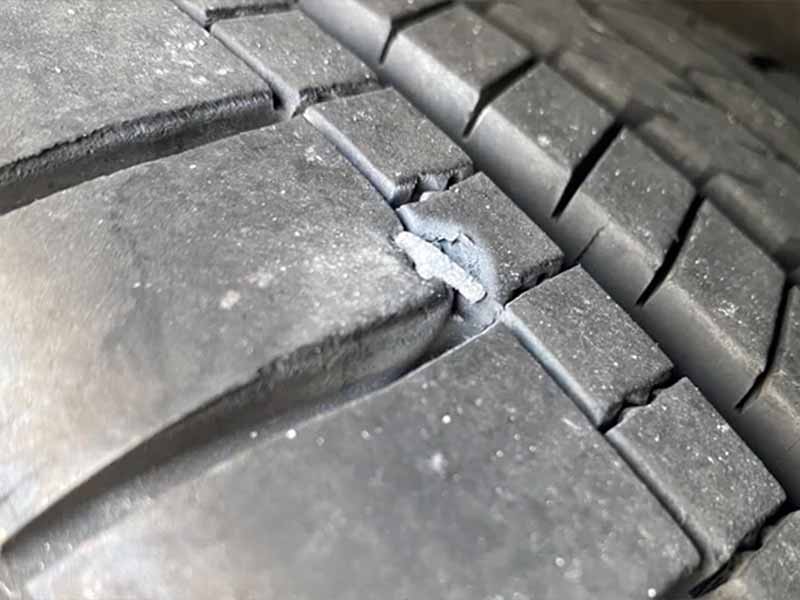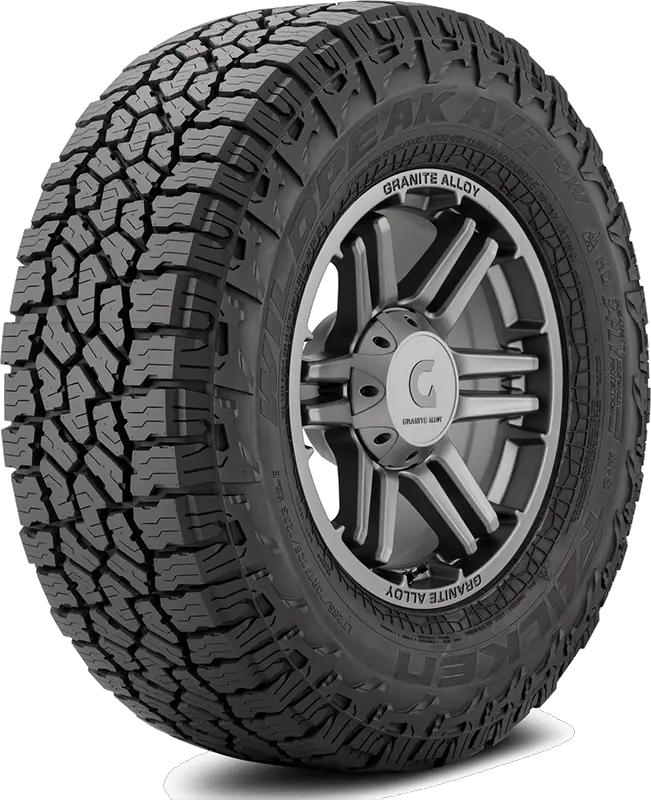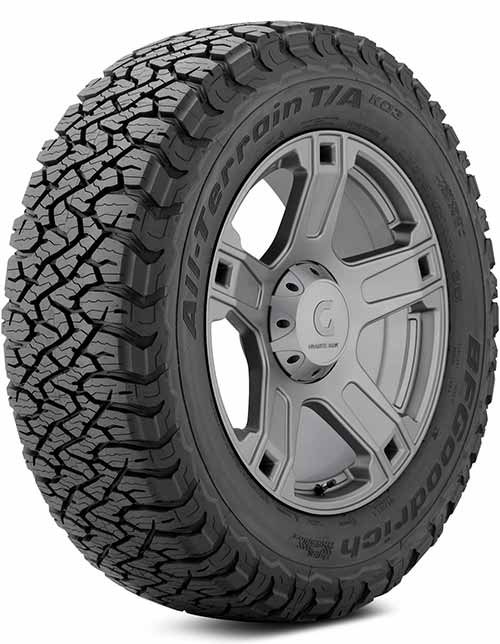You’ve just discovered a nail embedded in your run flat tire, and a wave of questions floods your mind. Can it be patched? Do you need an immediate replacement, or can you salvage it? Before you make a costly decision, let’s uncover the truth about repairing run flat tires.
Can Run Flat Tires Be Plugged?
Yes, run flat tires can be plugged, especially if the puncture is in the tread area. However, if the tire has been driven on with zero air pressure for an extended period, patching may not be advisable, and it’s essential to consider the manufacturer’s guidelines.
In this article, we’ll delve deep into the unique characteristics of run flat tires, explore common causes of punctures, discuss the pros and cons of plugging vs. patching, and provide guidance on when it’s time to visit a tire shop. We’ll also touch upon the role of spare tires in vehicles equipped with run flats.
Let’s take a closer look.

Can You Repair a Punctured Run Flat Tire?
Run flat tires are designed to provide drivers with the ability to continue driving even after a puncture. However, once you’ve reached a safe location or a tire shop, the question arises: Can the punctured run flat tire be repaired? Let’s explore this topic in detail.
Understanding the Damage
Before deciding on a repair, it’s essential to assess the extent of the damage:
- Location of the Puncture: Punctures that occur in the tread area of the tire are generally more repairable than those on the sidewall.
- Size of the Puncture: Small punctures, such as those caused by nails or screws, are often repairable. Larger punctures or gashes might require tire replacement.
- Duration of Driving: If you’ve driven on the punctured run flat tire for a distance beyond the manufacturer’s recommended limit, the tire’s structural integrity might be compromised.
Plugging vs Patching
There are two primary methods to repair punctured tires: plugging and patching.
- Plugging: This method involves inserting a plug into the puncture from the outside. It’s a quick fix but might not be as durable as patching.
- Patching: This method requires the tire to be removed from the rim. A patch is applied from the inside, covering the puncture. It’s generally considered more durable than plugging.
For run flat tires, many experts recommend patching over plugging due to the tire’s unique construction.
Manufacturer’s Recommendations
It’s crucial to consider the tire manufacturer’s guidelines:
- Some manufacturers advise against repairing run flat tires after they’ve been driven on while deflated.
- Others might allow repairs, but under specific conditions or for certain types of punctures.
Always refer to the manufacturer’s guidelines or consult with a professional at a tire shop before making a decision.
Safety First
When deciding whether to repair or replace a punctured run flat tire, always prioritize safety:
- If there’s any doubt about the tire’s integrity after a repair, it’s best to replace it.
- A compromised tire can pose significant risks, especially at high speeds or under heavy loads.
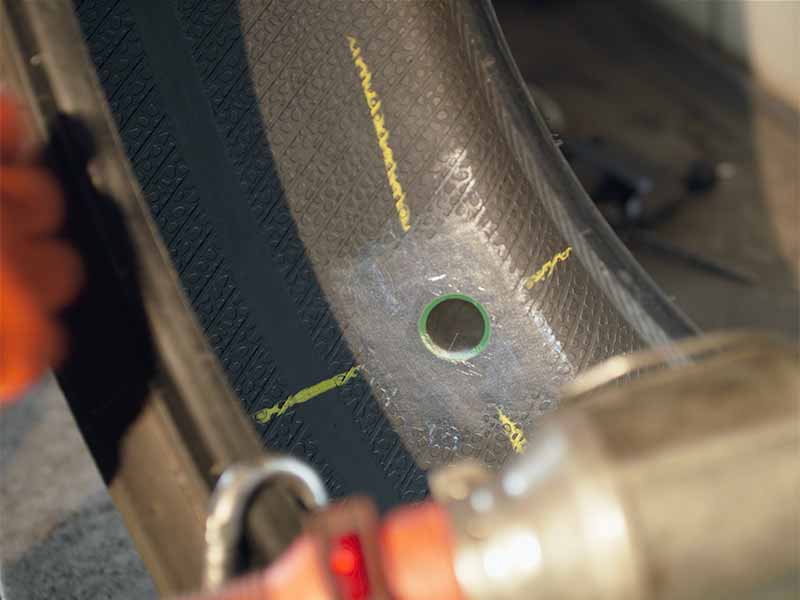
Plugging vs Patching: Which is Better for Run Flat Tires?
When faced with a punctured tire, especially a run flat, the decision between plugging and patching becomes crucial. Both methods have their merits, but which one is more suitable for run flat tires? Let’s dive deep into the comparison.
The Plugging Process
Plugging is a common method used to repair punctures in the tread area of a tire.
- Procedure: A plug, made of rubber, is inserted into the puncture from the outside of the tire. It acts as a sealant, preventing air from escaping.
- Advantages:
- Quick and straightforward.
- Doesn’t require the tire to be removed from the rim.
- Suitable for small punctures.
- Disadvantages:
- Might not be as durable as patching.
- Doesn’t seal the inner liner, which can lead to moisture entering the tire.
- Not always recommended for run flat tires due to their unique construction.
The Patching Process
Patching is a more comprehensive repair method, often preferred for its durability.
- Procedure: The tire is removed from the rim, and a patch is applied from the inside, covering the puncture. The patch not only seals the puncture but also bonds with the inner liner of the tire.
- Advantages:
- Provides a more durable and airtight seal compared to plugging.
- Seals the inner liner, preventing moisture and contaminants from entering.
- Often recommended for run flat tires due to its thoroughness.
- Disadvantages:
- More time-consuming than plugging.
- Requires specialized equipment and expertise.
Factors to Consider
When deciding between plugging and patching, consider the following:
- Type of Tire: Run flat tires, with their reinforced sidewalls, often benefit more from patching due to the method’s thoroughness.
- Size and Location of Puncture: Small punctures in the tread area might be suitable for both methods. However, larger punctures or those closer to the sidewall are better addressed with patching.
- Duration of Repair: If you need a quick temporary fix, plugging might be the way to go. For a more lasting repair, patching is advisable.
- Manufacturer’s Guidelines: Always refer to the tire manufacturer’s recommendations. Some might have specific guidelines regarding the repair of their run flat tires.
What Makes Run Flat Tires Unique?
Run flat tires, often referred to as “run flats,” are a revolutionary advancement in the world of automotive tires. Designed to provide safety and convenience, these tires have distinct features that set them apart from regular tires. Let’s delve into the unique characteristics and benefits of run flat tires.
Reinforced Sidewalls
- One of the primary features of run flat tires is their reinforced sidewalls.
- Unlike regular tires, the sidewalls of run flats are sturdier and more robust.
- This reinforcement allows the tire to support the weight of the vehicle even when it’s deflated.
Ability to Drive After a Puncture
- A significant advantage of run flat tires is their ability to continue functioning after a puncture.
- In the event of a puncture, a regular tire would go flat and become un-drivable. However, with run flats, you can still drive for a limited distance, typically between 50 to 100 miles, depending on the manufacturer’s specifications.
- This feature provides drivers with the opportunity to reach a safe location or the nearest tire shop without the immediate need for a tire change.
No Need for a Spare Tire
- Vehicles equipped with run flat tires often don’t come with a spare tire.
- The rationale is that the run flat’s ability to function after a puncture eliminates the immediate need for a spare.
- This can save space in the vehicle and reduce overall weight, which might lead to improved fuel efficiency.
Enhanced Vehicle Stability
- In the event of a sudden puncture, run flat tires provide better stability compared to regular tires.
- The reinforced sidewalls prevent the tire from collapsing, allowing the driver to maintain better control of the vehicle.
- This can be especially crucial in high-speed scenarios, reducing the risk of accidents.
Considerations for Run Flat Tires
While run flat tires offer numerous advantages, it’s essential to be aware of certain considerations:
- Tire Monitoring Systems: Vehicles with run flat tires usually come equipped with a Tire Pressure Monitoring System (TPMS). This system alerts the driver when there’s a significant drop in tire pressure, indicating a potential puncture.
- Replacement Costs: Run flat tires can be more expensive to replace than regular tires. Additionally, not all tire shops stock run flats, so finding a replacement might require a special order.
- Ride Comfort: Some drivers find that run flat tires offer a firmer ride compared to regular tires. This is due to the reinforced sidewalls, which can transmit more road imperfections to the cabin.
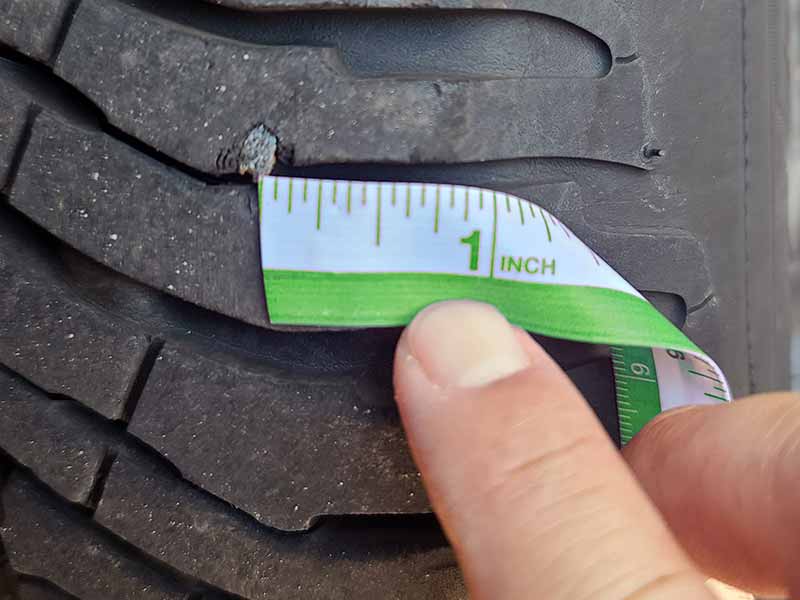
Common Causes of Punctures in Run Flat Tires
Run flat tires, like all tires, are susceptible to punctures. Understanding the common causes of these punctures can help drivers be more vigilant and take preventive measures. Here’s a detailed look at what typically causes punctures in run flat tires.
Road Debris
- Nails and Screws: These are among the most common culprits. Often left behind on roads due to construction or accidents, they can easily embed themselves into a tire’s tread.
- Glass Shards: Broken glass from accidents or discarded bottles can be sharp enough to puncture a tire, especially if driven over at high speeds.
- Metal Fragments: Bits of metal, whether from broken vehicle parts or other sources, can be sharp and cause punctures.
Poor Road Conditions
- Potholes: Driving over potholes can not only damage the wheel but also cause a tire to puncture, especially if the impact is severe.
- Sharp Rocks: On unpaved roads or areas with loose gravel, sharp rocks can pose a puncture risk.
- Road Cuts: These are often seen in areas where roadwork is ongoing. If not properly smoothed, they can have sharp edges that puncture tires.
Tire Wear and Age
- Tread Wear: As a tire’s tread wears down, it becomes more susceptible to punctures. A thinner tread can’t offer the same level of protection as a new tire.
- Aging: Over time, the rubber in tires can become brittle and less resilient. An older tire might be more prone to punctures than a newer one.
External Factors
- Vandalism: Unfortunately, deliberate acts of vandalism, like someone slashing a tire, can be a cause of punctures.
- Accidents: Collisions or scraping against curbs can lead to tire damage and potential punctures.
Preventive Measures
To reduce the risk of punctures:
- Regularly inspect your tires for embedded debris or signs of wear.
- Avoid driving over potholes or on roads with visible debris.
- Rotate your tires as recommended to ensure even wear.
- Replace tires that show signs of aging or have worn-down treads.
Resources
Below are some links you may find helpful when learning about tires
Final Thoughts
Their unique construction allows for continued driving even after a puncture, eliminating the immediate need for a roadside tire change. However, like all automotive components, they come with their own set of considerations.
Whether it’s deciding between plugging or patching, understanding when to seek professional help, or weighing the need for a spare tire, being informed is key.
Good luck and happy motoring.
